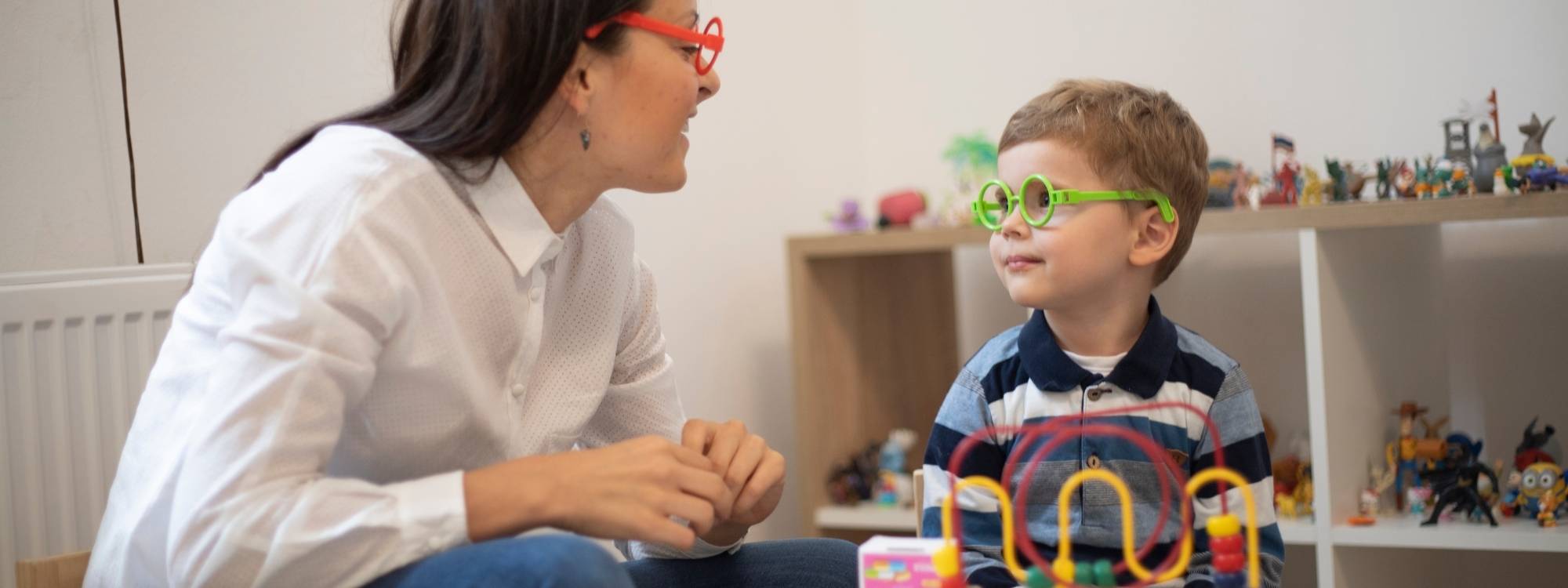A Complete Guide on How to Get Tested for Autism Effectively
Autism Spectrum Disorder (ASD) is a neurodevelopmental condition that affects how people communicate, interact socially, and experience the world. If you want to know how to get tested for autism, it usually starts with early screenings and professional evaluations. Symptoms often appear in childhood, but some individuals are not diagnosed until later in life. Because autism is a spectrum, the signs and support needs can vary widely from person to person.
Diagnosing autism is a complex process guided by the Diagnostic and Statistical Manual of Mental Disorders (DSM-5), published by the American Psychiatric Association. According to the DSM-5, a formal autism diagnosis requires evidence of persistent deficits in social communication and restricted, repetitive patterns of behavior.
Medical professionals qualified to diagnose autism include developmental pediatricians, child psychologists, child psychiatrists, and, in some cases, primary care providers. Getting tested for autism can be a pivotal step in accessing the support and services necessary to thrive.
Understanding Autism Diagnosis
A formal autism diagnosis is more than a label, it’s a gateway to essential services, therapies, and educational accommodations. The process typically begins when a parent, caregiver, or individual notices signs such as delayed speech, limited social interaction, or repetitive behaviors.
Diagnosing autism involves reviewing the person’s developmental history and current behavior. The evaluation looks at how the individual communicates, interacts socially, manages sensory input, and engages in daily activities.
Healthcare professionals use standardized diagnostic criteria from the DSM-5 to assess whether someone meets the requirements for an ASD diagnosis. In some cases, a team of specialists may evaluate to ensure all aspects of the individual’s behavior and development are considered.
Autism Screening
Screening is the first step in identifying potential signs of autism. Pediatricians typically perform autism screening during routine well-child visits at 18 and 24 months using standardized screening tools. For older children or adults, screenings can occur when behavioral concerns arise.
It’s important to understand that a screening tool is not a diagnostic test. Rather, it helps determine whether further assessment is warranted. Screenings focus on identifying red flags in social communication, language development, and behavior.
Common autism screening tools include:
- M-CHAT-R/F (Modified Checklist for Autism in Toddlers) – Used for children between 16 and 30 months.
- Ages and Stages Questionnaires (ASQ) – Broad developmental screening tool for early childhood.
- Social Communication Questionnaire (SCQ) – Often used for school-aged children.
Healthcare providers may recommend further evaluation if screening results indicate a concern.
Evaluation and Diagnostic Tools
When a screening suggests possible autism, the next step is a comprehensive evaluation. This assessment involves gathering detailed information about the individual’s development, behavior, social skills, and communication abilities.
Several diagnostic tools are commonly used:
- Autism Diagnostic Observation Schedule (ADOS) – A structured interaction that assesses communication, social interaction, and play.
- Autism Diagnostic Interview-Revised (ADI-R) – A detailed parent interview focusing on developmental history.
- Autism Spectrum Quotient (AQ) – A self-assessment tool often used with adults.
- Childhood Autism Rating Scale (CARS) – Rates behavior to determine autism severity.
These tools help clinicians evaluate behaviors in various settings and determine if they meet diagnostic criteria for ASD. The process may also include input from teachers, speech-language pathologists, or occupational therapists.
Co-Occurring Conditions
Autism often coexists with other developmental or mental disorders. Identifying these co-occurring conditions is crucial because they can influence treatment plans and overall outcomes.
Examples of common co-occurring conditions include:
- Intellectual disability
- ADHD (Attention-Deficit/Hyperactivity Disorder)
- Anxiety disorders
- Sensory processing issues
- Speech and language delays
A comprehensive evaluation can uncover these concerns, allowing medical professionals to develop targeted treatment strategies that address the full scope of a person’s needs.
Related Services and Support
After a formal diagnosis, access to related services becomes available through schools, community programs, and healthcare providers. Early intervention is especially beneficial and often includes therapies designed to improve communication, motor skills, and behavior.
Children may receive services through their local school district, such as:
- Speech therapy
- Occupational therapy
- Behavioral interventions like ABA therapy
- Individualized Education Programs (IEPs)
Adults seeking services can find support through autism resource centers, nonprofits, vocational programs, and government-funded services tailored to their age and needs.
Navigating the System
For parents and adults seeking an autism diagnosis, navigating the healthcare and educational systems can feel overwhelming. Knowing where to begin and what steps to take makes the process more manageable.
Start by discussing concerns with a primary care provider. They can refer you to developmental specialists or clinics that offer formal autism evaluations. It’s important to document any observed behaviors and developmental milestones to support your case.
In some cases, families may encounter long wait times for assessments. In those situations, it’s appropriate to:
- Ask for interim support or therapies while waiting
- Seek a second opinion from another qualified provider
- Connect with local support groups for guidance and resources
Ongoing Assessment and Evaluation
Autism is a lifelong condition, but symptoms and support needs can change over time. Ongoing assessments help track progress, adjust treatment plans, and ensure the individual continues to receive appropriate support.
Regular evaluations may be conducted by:
- Pediatricians or developmental pediatricians
- Child psychologists
- School-based teams
These follow-ups can monitor changes in behavior, learning progress, and emerging challenges, such as transitions into adolescence or adulthood.
Treatment and Intervention
There is no one-size-fits-all treatment for autism. Effective intervention plans are tailored to the individual’s specific strengths, challenges, and goals.
Evidence-based treatments include:
- Applied Behavior Analysis (ABA) – Improves behavior and communication skills
- Speech-language therapy – Builds verbal and nonverbal communication
- Occupational therapy – Helps develop motor skills and daily living skills
Early intervention has been shown to improve long-term outcomes in cognitive function, language development, and independence. Medical professionals work closely with families to design personalized treatment plans and provide continued support.
Conclusion
Getting tested for autism is an important step toward understanding a person’s unique needs and strengths. Through early screening, comprehensive evaluation, and support from medical professionals, families and individuals can access resources that make a meaningful difference. With ongoing assessment and tailored intervention, autistic individuals can lead fulfilling and supported lives.
At Champions ABA, we guide families and individuals through every step of the autism diagnosis journey. Whether you’re seeking answers for your child or yourself, our experienced team is here to support you with clarity and compassion. Call (877) 242-1744 or visit our website to learn more and take the next step today.
FAQs
How do you officially test for autism?
Testing for autism involves a multi-step process. It typically starts with screening by a pediatrician or healthcare provider, followed by a comprehensive evaluation using tools like the ADOS and ADI-R. The process includes observing behavior, interviewing caregivers, and comparing symptoms to the criteria outlined in the DSM-5.
How do doctors test if you have autism?
Doctors assess for autism through detailed observations, standardized tests, and interviews. Tools like the Autism Diagnostic Observation Schedule (ADOS) and Autism Diagnostic Interview-Revised (ADI-R) are commonly used. A developmental history and behavior review are also key parts of the diagnostic process.
What are the 5 main symptoms of autism?
While symptoms vary widely, five core traits often include difficulty with social communication, limited eye contact, repetitive behaviors, intense focus on specific interests, and challenges with changes in routine or sensory input. These characteristics can manifest differently in each individual and may range from mild to more pronounced depending on the person’s developmental stage and support needs.
How do you get diagnosed with autism?
You can begin the diagnostic process by speaking with a healthcare provider, such as a pediatrician or psychologist. They may conduct initial screenings and refer you to specialists for a formal evaluation. Diagnosis is based on observed behaviors, developmental history, and alignment with DSM-5 criteria for Autism Spectrum Disorder.



